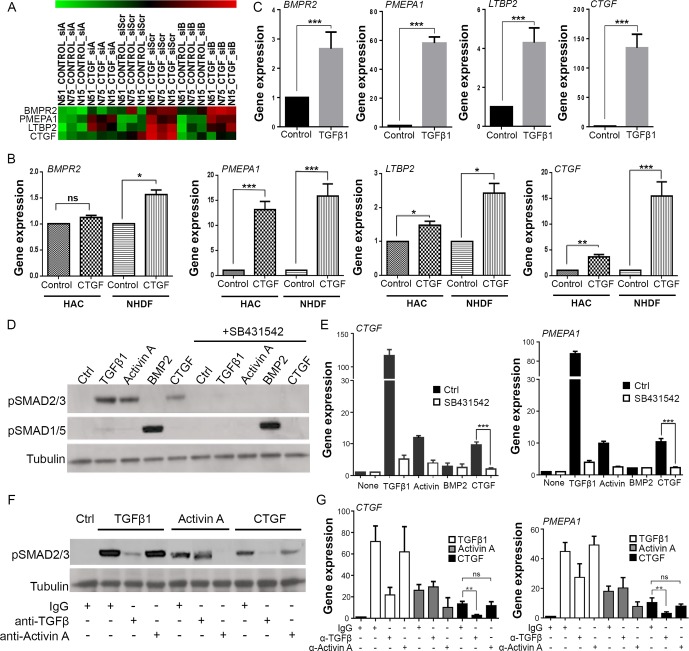Figure 2.
Connective tissue growth factor (CTGF) induces TGFβ-dependent SMAD2 phosphorylation and gene regulation. (A) Heat map of microarray Z-scores for the genes upregulated in human chondrocytes 8 hours after stimulation with 100 ng/mL CTGF (in triplicate). siRNAs targeting CTGF (siA, siB) were used to silence endogenous Ctgf prior to stimulation with recombinant ligand. The scrambled siRNA (siScr) is also shown. (B) RT-PCR validation of CTGF-induced genes in human articular chondrocytes (HAC) and normal human dermal fibroblasts (NHDF). (C) RT-PCR of NHDF treated with 10 ng/mL TGFβ1. All gene expressions expressed relative to GAPDH. Porcine chondrocytes were stimulated for either 45 min (D) or 8 hours (E) with 10 ng/mL TGFβ1, 100 ng/mL activin A, 100 ng/mL BMP2 or 100 ng/mL CTGF in the presence or absence of 5 µM SB431542. Lysates were immunoblotted for pSMAD2 and pSMAD1/5 (D), or RT-PCR performed for expression of CTGF and PMEPA1 (E). (F, G) Porcine chondrocytes treated with TGFβ1, activin A or CTGF as above in the presence of 1 µg/mL anti-TGFβ or activin A neutralising antibodies. 45 min lysates were immunoblotted for pSMAD2 (F), or 8-hour RT-PCR performed for expression of CTGF and PMEPA1 (G). Western blots are representative of three independent experiments. All error bars represent SE. *p<0.05, **p<0.01, ***p<0.001 by a two-sided Student’s t-test. ns, not significant. n=3.

